How do you make a modern beehive? Can I build my own beehive?
THE MODERN HIVE
The home that houses the bee family varies with the tidiness of the keeper. This home, or hive must have room to live, room to expand, and a construction that is easy to manipulate. The modern hive exemplifies those principles architecturally.As the hive developed, words had to be found for its new parts. Most of those words were fashioned by simple, straightforward men. They had no vanity in intricate nomenclature, and did not have the collegiate art of bewildering a subject with Latin and Greek roots. Words were selected only where they aptly and in themselves classified the object under discussion. They christened the new beekeeping in everyday language.
Thus the parts of the modern hive came by the simple, descriptive names of: Bottom Board; Hive Stand; Alighting Board; Entrance; Brood Chamber; Movable Frames; Comb Foundation; Queen Excluder; Supers; Inner Cover and Outer Cover.
The Bottom Board
The foundation or first floor of the hive is called the bottom board. Notice its construction. It has a low, thick wall or rail around three sides that extends above the board, and below it. The under, or lower rail rests on the ground, and holds the board off the wet or cold ground. Thus it puts a low cellar under the hive. The upper rail supports the upper stories of the hive.Thus the bottom board itself becomes a first floor. Note how it extends several inches beyond the wall line of the upper stories. That extension is the counterpart of a front porch. That is where the bees alight when they return home from the fields. They are met there by other bees, called the home guards, who watch for and challenge unidentified arrivals. That is where the baby bees get their first glimpse of the world into which they are born, and from where they take off on their first flight. There when the sun is strong, and the honey flow is at its height, the drones waylay the incoming bees for a sip of nectar; but as the season advances, and the nectar dwindles, the worker bees tire of those who toil not yet they feast; and the same spot then becomes the scene of the drones’ destruction.
The Hive Stand
Some beekeepers place the bottom board directly on the ground; others place it on a platform of varying height, called a hive stand. In nature the hive stand is a tree trunk.In domesticated, commercial beekeeping, the hive stand, as such, is still a matter of controversy. The high up advocate maintains that a higher position keeps the entrance free of growing weeds, creepers and small animals. In Texas, or similar terrain, says he, it keeps the rattlesnakes from coiling up underneath to keep warm, or cool, or dry or moist, or whatever compulsion it is that drives a rattlesnake in Texas under a low hive stand.
The other end of the theory wants just enough height to keep the bottom board clear of ground moisture and cold; for more, he maintains, adds only to the problem of manipulation. A hive body that is full of honey is heavy. The problem of examining it, or lifting it, increases with the height to which it is elevated.
The arguments for every variation between the extremes differ with the enthusiasm and imagination of its advocate. The best guiding principle is the application of common sense to the ground conditions and growth about your own proposed location.
The Alighting Board
The homeward bound bee, laden with honey or pollen, should have a convenient landing place. In nature she has the whole length of a tree trunk or stump. She doesn’t use it all, to be sure; but there it is. In commercial beekeeping the landing place is oftentimes just a jetty off the bottom board. There has been a tendency to compromise between these two extremes. The new development has been named the alighting board. It is a runway, of varying length, from the ground to the landing board.Those in favor of an alighting board maintain that it keeps down grass; that it provides an easier access to the entrance; and that it is a convenient retreat when the inside of the hive is too hot. The opposition does not grade these benefits very highly, and offsets them with the criticism that children trip over the boards, with varying results; animal life gathers under it; and the winter snows pile on it and block up the entrance.
The Bee Entrance
A bee entrance is any opening anywheres in the hive large enough for ingress or egress. In early controlled apiculture there was only one entrance. This was located on the bottom board, under the brood chamber, and was formed by the uncompleted contact of those two parts. That entrance is still used. It runs the width of the bottom board. It is the main door to the hive.This entrance is kept open full width in warm weather, and reduced in size, by blocks, as the weather requires. A tidy, inexpensive block, or cleat has been invented for that purpose. It is in one piece, the width of the hive, the height of the entrance, and there is an opening of different size on each side of it, suitable for a different weather condition. The entrance, however, should never be blocked off in full, no matter what the weather.
After a hard winter old hive boards warp, and by the next fall little openings appear in the back and sides. The indifferent beekeeper went his way and did not repair the damage. This passive act revolutionized apiculture almost as much as the apple that fell on passive Newton’s head affected general science. It was found that the bees wintered best in the leaky, broken old hives.
A survey of differences, and of cause and result showed that the broken, old hive always had some crack in it large enough for ventilation; whereas its substantial weatherproof competitor in the bee yard did not. The latter with its single and low entrance, was frequently closed up for many winter months with snow and ice. Many bad conditions developed. The bees could neither get in nor out. There was no opportunity for that necessary, proper occasional outdoor flight. Many died from confinement, and its diseases.
The natural moisture of the hive could not evaporate. It condensed and settled as water on the bees and on inner parts of the hive. It froze in masses.
These observations led to the conclusion that a wintertime exit was needed above the snow level. This led to the development of the top entrance, consisting simply of a hole and nothing more bored into the handle of the top body of the hive, and just large enough to permit two bees to pass each other on the diameter line. This upper entrance is often spoken of as a vent hole, or as upward ventilation. Its function is to allow moisture to escape in winter and to provide an emergency flight hole if the more regular bottom entrance becomes closed up with outer winter snows or inner dead bees.
The Brood Chamber
Some call it the hive body. It is the principal and dominant part of the structure. The parts above it are the modern implements for managing and controlling the overflow of its various activities.The brood chamber is where life begins, is fed and develops. It is the birthplace, the kitchen, the nursery and the school room. It consists of a box without top or bottom and constructed to hold a set of movable frames with comb. Into this comb, which is beeswax fashioned into thousands of cells, the queen lays her eggs. The eggs develop, hatch, and the new born bee is launched on that cycle of tasks which are part of its world. More eggs are then laid, develop, hatch and the inevitable style of life then repeats itself.
Sometimes one brood chamber may not be adequate to house all the eggs for the queen. For some of these sweet, gentle little creatures are a veritable egglaying piece of machinery, depositing by count over 3000 eggs per day.
Now if you found yourself with one like that on your hands and it happens often what would you do? Naturally: you would furnish such a queen with a second brood chamber; one just the same as the first, and placed right on top of it. You would then have what is aptly called a two story brood chamber hive. And when you open it at meetings, to the admiring gaze of your fellow beekeepers, they will see a dignified, fat bottomed queen busied about circles of larvae, and surrounded by cells of pollen and nectar, and they will hear the happy mellow buzzing of the thousands of children she has brought into the world. It will be a hive of honey and a honey of a hive.
The Movable Frames
The frame is the border or structure used to inclose and support the wax comb and to regulate its size and shape. It is the greatest contribution to the art and the science of beekeeping.As a result of the frame each comb is a separate part of the hive. Each frame, and accordingly each comb, is independent of the others, and may be moved and removed at will. It may be examined with convenience, and tended as necessary. It may be replaced without jarring the hive, or upsetting the colony.
Frames were unknown, not so long ago. Comb then had neither form nor regularity nor mobility. They were interfastened with each other and with the hive body in twists and turns. It was a mess. You meet the same situation now a days in a wild bee tree. Have you ever opened one? To gather the honey, it is in each case first necessary to destroy the colony. Then comes the next burden, and anyone who has tried it knows, of cutting out and transporting dripping pieces of twisted comb mixed with larvae and dead bees, and then salvaging some part of the honey from this unappetizing conglomeration.
The advantages of the movable frame is conceded. There is a diversity of opinion however as to the size, shape or number in a hive. The modern tendency is ten in a hive, and of a size or shape that adapts itself to the tendency of a queen to lay her eggs in circular or elliptical design.
Comb Foundation
The stock or ground material on which honeycomb is built by the bees is called comb foundation. It is the substructure or basis that gives to comb its model and strength. It consists of a thin sheet of pure beeswax, just large enough to fit comfortably into the frame. This sheet has had a design impressed into it that duplicates exactly the midrib or center of the natural honeycomb. The design is in fact so regular and perfect in size and in every detail that it is an improvement on nature.The bees accept and utilize it. They draw out the surplus wax in the sheet. It is ductile. They follow the indicated pattern of hexagonal cells, until they have extended them into completed combs.
Every comb built on a substructure of commercial foundation is strong and straight. What a delight it is to the efficiency expert. It has a minimum of drone cells and a maximum of worker cells. A beekeeper need no longer tour the countryside to trade with his fellow beekeepers for worker comb. It has reached the stage of commercial plenty.
What a saving it is on bee power. Every pound of wax in the hive represents the transition of ten pounds of honey. Our mathematical beekeepers have calculated that each pound of that honey required eighty thousand trips to the fields. Hence every pound of wax represents eight hundred thousand trips.
The Queen Excluder
When space for egglaying is not adequate the queen will leave the brood chamber and go up into the supers. Sometimes she does so for other causes. Whatever the reason, the result is honeycomb sprinkled with larvae ; and that is bad management.To restrict the queen to the brood chamber, and to shut her out of the upper chambers, a division board is placed between those two parts. This division board is called a queen excluder. It consists of a frame with crosswires which are so accurately spaced that worker bees may pass through but drones and queens cannot.
The Super
Any chamber placed above the brood chamber is called a super. It is an independent part of the hive, consisting, like the brood chamber, of a box without top or bottom, and constructed to hold a set of movable frames with comb. It may be a shallow super or it may be a full depth super which is the same as the brood chamber. Its purpose, of course, is to receive honey. As the season advances, and brings further honey plants, more supers are added to receive the surplus. In good honey districts they rise up higher than a tall man’s head.The Hive Cover
It is the roof top of the hive, and the protection against the elements of rain and sun; against excess moisture, heat or cold. Mechanically, therefore, it must cover the hive, stretching across the top of it, from end to end. Obviously, if it falls short as a cover, the hive will to that extent be open to rain and snow and enemies.These covers may be made of wood. They generally are. Some beekeepers use oilcloth, rubber, or other material as convenience, experience, or tidiness dictates, or as the desire to be different prompts. But whatever material you use, the bees will glue it down to the hive with bee glue, called propolis.
In time this outer cover will show the wear and tear of the elements. If it is of wood, the spring rains will warp it; if it is of rubber or any form of cloth the sun elements will rot it. Thus the purpose and function of protection will be disturbed to the extent of the damage. This is inevitable no matter what material is used. To guard against this, beekeepers developed a second cover to go on top of the first and telescope over it. This second cover received the name of outer cover; and the first one, the one underneath it, received the name of inner cover.





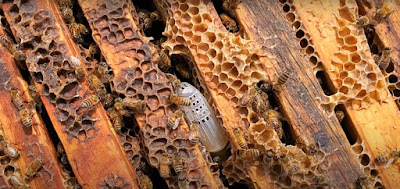
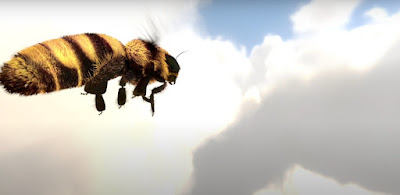

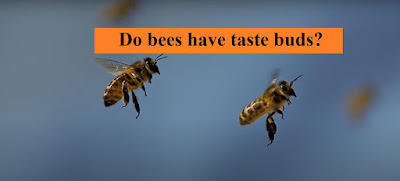
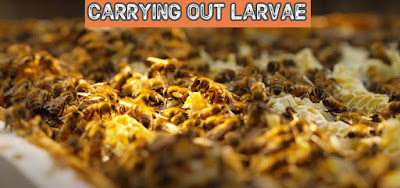
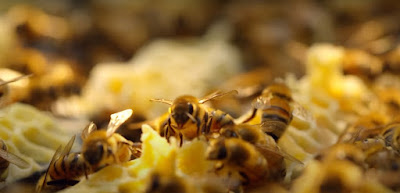

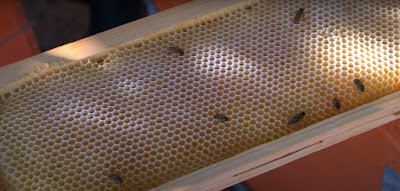


Comments
Post a Comment